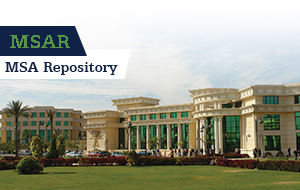CONFERENCE PURPOSE:
This conference will be a chance to find new solutions and innovations in the resilient urban systems. These creative inventions can be a motive to dynamic, desirable and healthy communities. “The Path to City Resilience” conference is a fertile ground for architects, engineers, city planners, social and political scientists who able to consider new concepts and adapt them according to technological innovations and human desires.
1- Urban Resilience:
Urban resilience is the measurable ability of any urban system, with its inhabitants, to maintain continuity through all shocks and stresses, while positively adapting and transforming toward sustainability. Cities and city inhabitants are facing additional challenges as a result of rapid urbanization, a changing climate and political instability. A resilient city assesses, plans, and acts to prepare for and respond to all hazards; sudden and slow-onset, expected and unexpected. As risks and urban population are increasing, urban resilience has gained greater importance in international development discourse and has emerged as one of the core principles of sustainable urban development in the global development frameworks and targets, including sustainable development goals, new urban agenda and agreements on climate change:
- Pathways towards implementing resilience.
- Innovation in the realm of urban resilience. New challenges require new solutions. How can innovations in the resilient urban systems be a motive to dynamic, desirable and healthy communities.
- Building cohesive, healthy and resilient community.
2- Resilience Planning:
Resilience planning is a holistic approach that takes into consideration future economic, social and environmental developments including climate change. Planning for resilience empowers diverse stakeholders to evaluate plans, set strategic policies, and implement projects that will enable communities to adapt and succeed when faced with challenges. Resiliency planning can include updating land use codes, zoning, development standards, incentive programs, and other plans or policies to better prepare for shocks and stresses while also developing measures that allow for action in the face of uncertainty or unexpected events.
3- Resilience and Heritage:
Historic cities, monuments, archaeological sites, museums and cultural landscapes are increasingly affected by threats both natural and manmade. The progressive loss of these places as a result of floods, mudslides, fire, earthquakes, civil unrest has become a major concern. Heritage contribute to social cohesion, sustainable development and psychological wellbeing. Protecting heritage promotes resilience. There is a considerable wealth of experience exists in protecting heritage form disasters and in harnessing the potential of a well-maintained historic environment to strengthen the resilience of communities. The initiative and commitment of national and local governments, businesses and communities around the world is increasingly apparent. Their efforts need to be further encouraged. UN Agencies, NGO’s and a wide range of universities and technical institutions have been organizing additional support and guidance. Nevertheless, efforts to protect heritage from disaster risk remain fragmented and efforts to draw on heritage as an instrument for building resilience remain inconsistent. It is essential for cities to protect their cultural and natural heritage to adapt to climate change without losing their identity.
4- Environmental Resilience:
- Climate change is aggravating the intensity and frequency of natural disaster worldwide. How are cities should be ready to cope with environmental risks.
- Examining the ability of natural systems to recover from disturbances and to tolerate or adapt to changing climate.
- Improving our understanding of the risks facing both natural and managed systems as a result of global change factors, such as climate change, land-use change and nutrient pollution.
5- Landscape Resilience:
- Landscape resilience is the ability of a landscape to sustain desired ecological functions, healthy natural biodiversity, and critical landscape processes over time, under changing conditions, and despite multiple stressors and uncertainties. Landscape resilience identifies the factors that create options and alternative for species and processes within places places. The attributes of resilience differ depending on whether the focus is on species and ecosystems or on enduring physical landscape. It is essential to explore the factors that allow a landscape and a geophysical setting to sustain ecological function and maintain a diverse array of species places as the climate changes. Those places with inherent properties that built resilience will be natural strongholds for species and nature into the future. The seven main principles of landscape resilience are setting, process, connectivity, diversity and complexity, redundancy, scale and people.
6- Infrastructure Resilience:
Infrastructure systems are important when considering infrastructure resilience. Resilience is not just related to individual infrastructure elements, but it shows how these work together as energy, transport, water and sanitation, ITC networks – and affect each other.
- Climate Change:
- Understanding climate change implications for infrastructure resilience.
- Best practices in infrastructure resilience and enhancing capacity.
- Critical consideration of the role of planning in resilience.
- Emergency Planning:
- Understanding acute events and their implications for infrastructure resilience.
- Understanding emergency planning’s role in infrastructure resilience.
- Best practices in emergency planning.
- Hard Infrastructure:
- Understanding the fundamentals of infrastructure resilience.
- Best practices in infrastructure resilience and enhancing capacity.
- Critical consideration of the role of planning in resilience.
- Natural areas and cities.
- Soft Infrastructure:
- Understanding the fundamentals of infrastructure resilience.
7- Resilience in Systems:
System resilience is an ability of the system to withstand a major disruption within acceptable degradation parameters and to recover within an acceptable time.
- Innovative methodologies, smart technologies, techniques and solutions to resilience challenges.
8- Innovative Smart Technologies and Resilience
Innovative applications of smart technologies make cities stronger, improving resources allocation, strengthening communication and social cohesion and generally making life easier for everyone living in the city.
9- Resilience in Education System:
Education resilience involves identifying risks and assets, protecting the assets in schools, universities and communities, and aligning education system commitment to a resilience approach. Resilience matters in education because learning and education can be the vehicle to overcome shocks and stresses.
10- National Policy Frameworks on Resilience:
Collaboration with other levels of government is one of the key drivers to ensure a coherent and integrated approach to resilience. Many national governments have plans for reinforcing their countries’ resilience.
Of the 45 national policy frameworks on resilience, 39 mention the role of cities or subnational governments for building national resilience in the national policy frameworks on resilience.
They refer to the importance of local actions for resilience by emphasizing that local authorities are primarily responsible for building resilience. Some frameworks on resilience include very specific roles and missions for cities.





